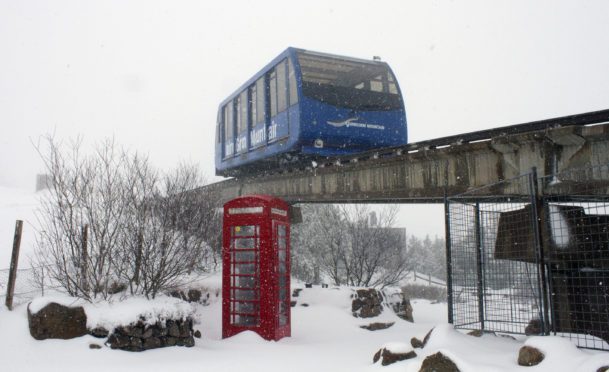The first snows of autumn have fallen on the Highland hills. And the news has encouraged many a keen skier to start checking their equipment for the coming winter, in hopes of a good season.
However, here’s the problem. In terms of good skiing, Scotland is on the margins. Yes, if conditions are perfect they can be stupendous, with long powdery runs on soft snow under pristine blue skies. But in reality, how often is that the case? We often look back at such days through rose-tinted spectacles. In happy memory, that is what skiing in Scotland is all about. The reality is somewhat different. More often, the trip to the slopes is in vain, with access roads closed or lifts unable to operate due to high winds.
In the event of skiing being possible, the chances are it will be an uncomfortable experience, in driving sleet or cloud. Indeed, one of the benefits of learning to ski in Scotland is the ability to raise a single ski quickly to avoid a protruding boulder looming through the mist, as well as a skill seldom taught on the pristine slopes of the Alps – how to aquaplane over a slushy puddle.
This is how I learned to ski, first at Glenshee, and later on Cairngorm. I also skied often at Glencoe, and years ago even using a temporary tow on Ben Lawers. Happily, proposals for a Lawers ski development disappeared many years ago.
Today there are five main ski areas – Cairngorm, Glenshee, the Lecht, Glencoe, and Aonach Mor. Over the years, there have been many other proposed ski developments around the Highlands. Most people will remember the public inquiry and major controversy over the proposed expansion of the Cairngorm ski area into Lurcher’s Gully in the 1980s. Fortunately in retrospect, this was scrapped, thanks in no small part to the expert evidence provided by the late Dr Adam Watson, whose knowledge of the mountains and their snow conditions was second to none. Adam was a keen skier himself, but was also a conservationist, and saw the damage the proposed development could have caused.
The Lurcher’s Gully proposal wasn’t alone at the that time. Around the same period, there were plans for two developments at the Drumochter Pass. One was for a funicular railway, a series of tows and a lift at Jean’s Gully, while the other envisaged a development slightly further north on the Munro Carn na Caim. This second plan would have featured a large car park on the A9, and a shuttle bus taking skiers to the base station and restaurant three-quarters of a mile away. There was even an alternative proposal for a Maglev railway to replace the shuttle bus.
Further north, again around the same time, there were two rival proposals for developing Ben Wyvis as a downhill ski area. One planned a road halfway up the mountain with a lift and tows taking skiers to the plateau, while the other proposed a funicular railway. In the event, neither went ahead, although the second plan was briefly resurrected a few years ago by local MSP Jamie Stone, now an MP at Westminster. Fortunately though, again nothing happened.
As we approach the coming ski season, all eyes are on Cairngorm, and the seemingly doomed funicular railway there. This surely is a parable for all the unrealistic ski proposals we’ve seen proposed for Scotland over the years. It opened in 2001, having cost £26 million to build. It’s almost impossible to discover how much public money – your money and mine – has gone into the project over the years. Highlands and Islands Enterprise gave one of the operating companies loans totalling £4 million and spent a further £3.5 million on infrastructure. The railway closed in September last year due to structural problems, and the company operating it on behalf of HIE, who now own it, went bust in November.
Initially, HIE claimed repairs would be carried out and the railway would be operational again by 2020. That now seems highly unlikely. Almost half of the piers which support the railway are in need of repair, 300 bearings require replacement, while the connections to the beams also need to be reinforced. Repair costs are currently estimated at £10 million. An alternative would be to demolish and remove the railway completely, but this action has been conservatively costed at £13 million.
It will now be up to the Scottish Government to decide what to do, and HIE will present a business case to them in December. No matter which side the Government takes, they will receive criticism, and no matter what the final outcome, the taxpayer will be left to foot an enormous bill for a development which should never have been built in the first place.
It’s a timely reminder that Scotland is only just viable as a ski destination, even without the ongoing effects of climate change. We can never compete in terms of quality with the top Alpine or even Andorran, Romanian, Bulgarian, or even Balkan resorts. And the sad story of the over-ambition of the Cairngorm funicular is a reminder of that unhappy fact.
Campbell Gunn is a retired political editor who served as special adviser to two First Ministers of Scotland

